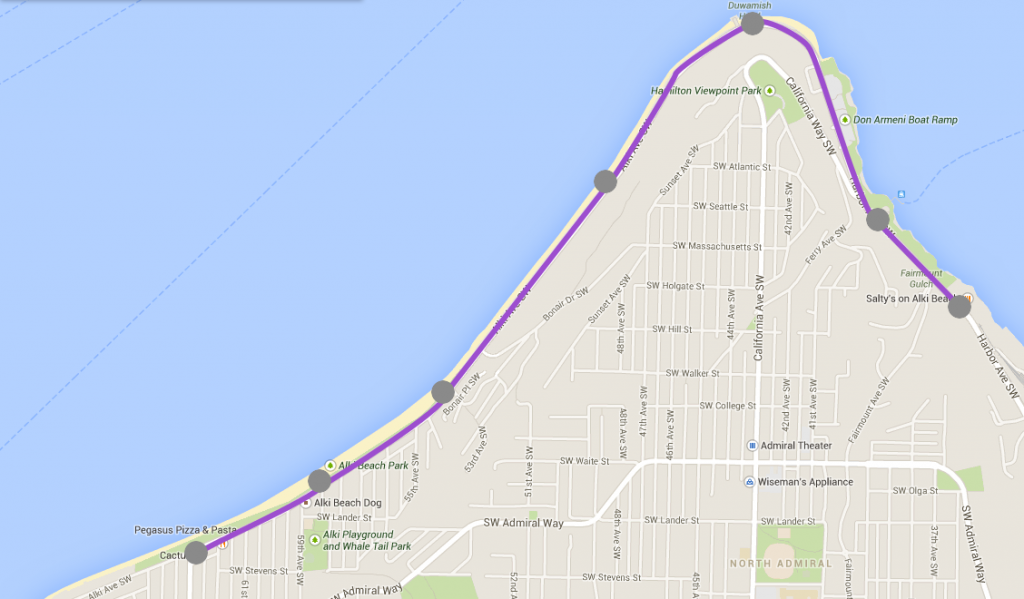By Charles Bond and Gordon Werner

In the discussions about the new Alaskan Way project and the 1st Ave streetcar, the topic of the old Greg Benson waterfront streetcar often comes up. Since the loss of their home on the waterfront, the cars have been tossed back and forth between the 1st Ave and Alaskan Way plans with each project seeming to assume that the other will take care of them. A new idea, however, is putting the cars somewhere else entirely–like along Alki Beach.
First, a little history
Streetcars used to run along the waterfront from where the Olympic Sculpture Park currently stands to Pioneer Square and the transit center on Jackson St. The streetcar storage barn was demolished to make way for the Sculpture Park and, though promised, a replacement never materialized. In the subsequent years, much of the track for the streetcar line was removed, though many have suggested it be added back to the new Alaskan Way design or for occasional use on the 1st Ave streetcar line. Unfortunately, both alternatives have problems.
The problem with 1st Ave/Alaskan Way
As documented previously on Seattle Transit Blog, in order for the streetcars to be used with the 1st Ave project, the old waterfront streetcars and boarding ramps would have to be modified for ADA-accessible equipment and to accommodate the streetcar floor height, respectively. They would also need to use different track gauge and voltage than they currently do and to allow boarding on both sides of the car. An Alaskan Way-only alignment has the potential to run the cars unmodified, but that would restrict the cars to only Alaskan Way, severely limit the usefulness of the connection, and likely be unable to keep up with transit demand in this corridor.
Why Alki Beach?
If these cars operated on Alki Beach, they could run in a single dedicated lane with passing zones as it originally did on the Seattle waterfront. They could connect the water taxi with the popular parks and shops on the north coast and boost both transit access and tourist appeal to the Alki Beach area. In a dedicated lane, the streetcar could run with relatively high frequency and fewer vehicles than buses generally need. Also, since the 37 bus route is slated to be canceled with the upcoming Metro cuts, this corridor could use some extra service.
Where would funding come from?
This is easily the biggest challenge, but there might be some creative solutions. Since there is a tourism component to this and lot of public support for restoring the waterfront streetcar, there might be some way to scrape up funds for this project using crowd-funding, local tourism boards, or other agencies/cruise lines that might be interested in generating more area attractions.
Challenges
This idea is not problem free, of course. The aforementioned funding sources may be inadequate, the loss of parking required for exclusive lanes would garner resistance, and this small project does not serve the core transit needs for West Seattle (just some small piece of the transit service likely to be lost with the upcoming metro cuts). The line would also have to be designed carefully not to interfere with the existing bicycle facilities along the Alki trail. Nevertheless, it may be more meritorious to put these old streetcars into service somewhere where they would see daily use rather than relegate them to occasional festival service in the heart of downtown.

Charles Bond
Charles is an avid cyclist that uses his bike as his primary mode of transportation. He grew up in the Puget Sound, but is currently overseas living in Japan. He covers a range of topics like cycling, transit, and land use. His time in Tokyo really opened his eyes to what urbanism offers people and has a strong desire to see growth happen in Seattle.

